Sapphire box artwork moved from well endowed 3D rendered women to robots last year, and their stance hasn't changed with their latest hardware. Its moody artwork, but we reckon not many people take that much notice anymore.
Some technical data is listed on the back of the box.
The bundle includes a quality HDMI cable, literature on the product -alongside software. We do recommend you ignore the drivers on the disc and snag the latest version direct from the AMD website – these discs can often be months out of date.
The Nitro range of cards follow a very specific style – they are predominately black with silver accenting. It is a good looking card with three fans taking up the full length of the PCB underneath. This time there is a ‘Sapphire' branded backplate fitted to the PCB which will hopefully reduce the hotspots we noticed last time we tested this solution.
The card is equipped with a dual link DVI-D connector, three DisplayPort 1.2a connectors and a single HDMI 1.4a connector. Sadly, no support for the new HDMI 2.0 standard – which means you can’t get 4K 60hz from this connector. This is something I do depend on myself as I use a 4K Sony TV for my gaming (which has only HDMI ports).
The card takes power from two eight pin PCIe connectors. It has bridge less Crossfire support, exactly like the 290 and 290x.
The big change over the first revision that we tested back in July, is the newly fitted backplate – shown above.
We can see the GDDR5 memory is directly cooled from the heatsink above. 10mm heatpipes expel heat from the copper heatpipe, across a large rack of aluminum fins which span the full width of the PCB. The diecast heatsink bolts into the PCB to help improve rigidity. Sapphire equip the card with their Diamond Black chokes to help improve stability and longevity.
An overview of the Sapphire R9 390 Nitro 8GB Rev 2 w/ Backplate. It is built on the 28nm process, has 64 ROPs, 160 Texture units, and 2560 unifed shaders. The core is clocked at 1040mhz, 30mhz faster than ‘Revision 1' which we reviewed in July. The 8GB of GDDR5 memory runs at 1,500mhz, or 6Gbps effective – an improvement over the R9 290, which on the reference design was set at 5Gbps effective.
 KitGuru KitGuru.net – Tech News | Hardware News | Hardware Reviews | IOS | Mobile | Gaming | Graphics Cards
KitGuru KitGuru.net – Tech News | Hardware News | Hardware Reviews | IOS | Mobile | Gaming | Graphics Cards


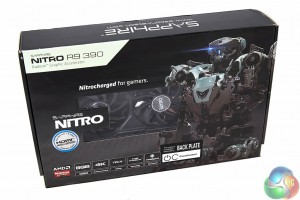
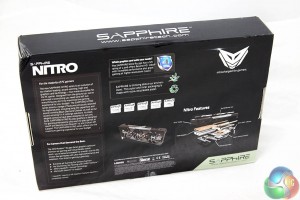
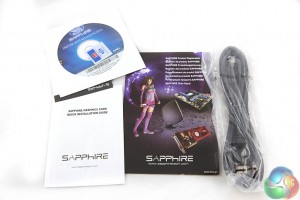
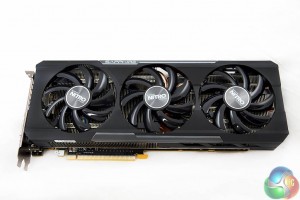
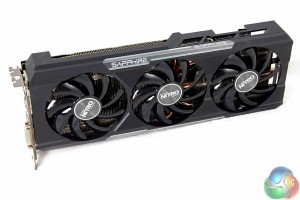
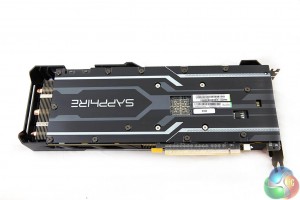
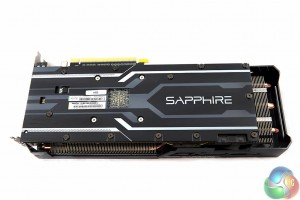
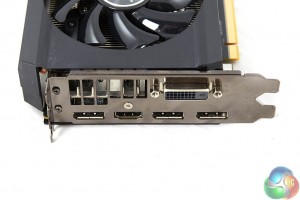
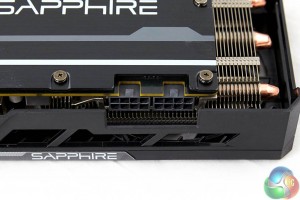
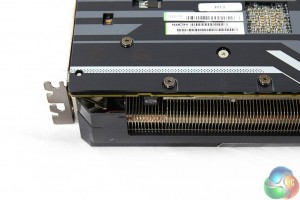
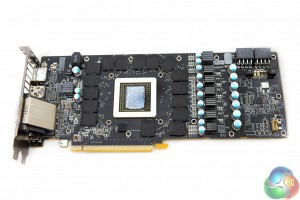


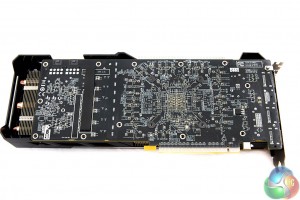
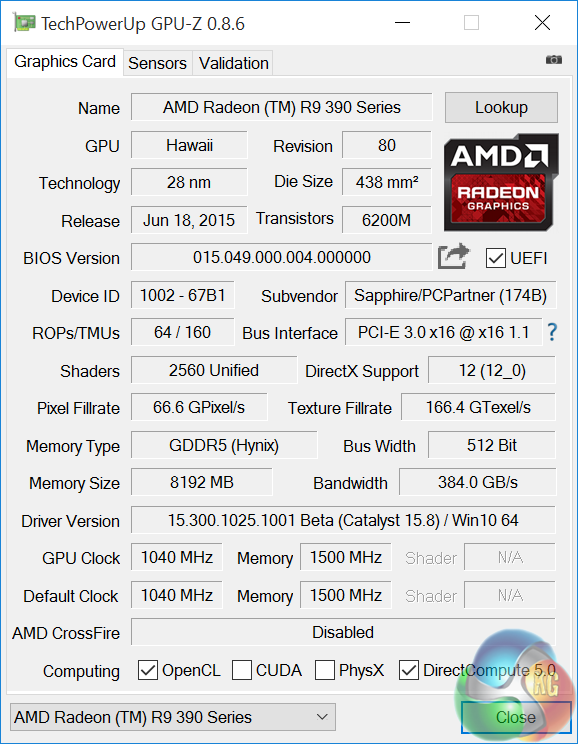

It may be faster than the 970GTX, but I’d hardly say they cost the same. With the added power consumption, this baby will certainly cost you a lot more in the end.
Only if you have the card for 5+ years iirc. Even a gamer’s PC spend most of their time off or in idle, it will have a minimal effect on your power bill.
A 100 watt difference will have a lot more impact than that. Even with the idle time (during which the 970 actually consumes more) it’ll cost you a few quid each year. After five years, it could easily run upwards of 10% of the price you paid, and you don’t have to game a lot to get there.
100W for a few hours every now and then, not really. And the point is it only starts becoming an amount you notice after 5 years, have you ever used a single video card for 5 years?
Assuming a 5 hour per day average of game play and playing everyday for a month, 100 watts equates to 15KWH more per month. Now in the US the average cost per KWH is around $0.12 so this would come out to $1.80 per month, so less than $24 per year in total energy cost increase.
For that extra minor monthly cost your getting better performance a much more robust memory system which could mean further gains as modern games use more memory.
5 hours a day every day for a year? Someone needs to get outside.
Which means a normal gamer would never notice the difference, but that being said a gamer wouldn’t notice the 8GB of memory as the card starts to dip in performance before the memory is used – if the fury or 980ti had 8gb of memory, that’d be different.
MSRP of the 390, according to this article, is about 270 quid.
If your estimate of power cost is true, then after 5 years, at a power cost of “upwards of 10% of the price you paid,” that leads to 27 quid.
Just to be nice to your theory, let’s round that up to 30 quid. Also rounds out the math nicely.
So over 5 years, you’ve spent 30 quid more on running the R9-390 than you would running the GTX 970. That’s 6 quid per year, or 0.50/month.
My questions for you, then:
One, does the R9-390 outperform the GTX 970 to such a degree that the 0.50/month is worth it?
Two, how long would one have to keep using the R9-390 in order for the power cost (at 0.50/month) to make up for the difference in purchase price between the two cards?
Three, be completely honest now, how badly will an extra 0.50/month on your electric bill mess with your monthly budget? Seriously?
Four, how long do you plan to keep that R9-390 or GTX 970? Will it be anywhere near as long as it would take to make up the difference in purchase price?
Five, do you actually care that much about power usage and power cost? Or are you grasping at any reason you can find to justify (to yourself) the brand preference you have chosen?
Wow to be up there in GTA 1080p (no AA?), and couldn’t offer number for AoS at 1440p?
Giving that Palit GTX970 appears to be that “Jetstream from September 23rd, 2014” (is that was what was used and then supposedly down clocked to reference?) because that normally is with a 1304Mhz Boost! I’d bet if GTA5 got a little AA that 970 would drop more than this 390 Nitro. The sad part is the Jetstream is a mix-bag card, built with on a reference “smurf” PCB, while Boosted well past other it like getting a Uber card and a non-beefy cooler. It might well ran good out of the box, but looking at what you get it’s a terrible value. I mean for not even 5% more this beautiful Sapphire Nitro that exudes quality and value.
And OMG if buy this much card a worrying about the power your using, do yourself a favor and just stop gaming altogether. While you sit there wasting time gaming and adding to Global Warning, give it up and do something useful for mankind.
While you raise valid points (except for 5 obviously, but I’ll ignore that one), these points are always valid for every minor increase in your energy bill. So you’re right, the price is probably not relevant for this one product. So in that sense, the price difference is irrelevant.
However, I am very meticulous about my energy bill (utilities in general actually), possibly too much so. If it’s fine for one product to spend a bit more, it could be fine for all products, resulting in an overall higher energy bill (and not unimportantly, environmental cost). And if you add 50 pence for a few dozen products, it becomes a lot quickly. Which I guess actually does address the first part of question five.
Yes actually 😀 which is why I’m looking for a new one 😉
So, here the 390 is slower than the 970 at 1080p on every game.
https://www.youtube.com/watch?v=x_5EbUL3BmY
It most cases yes the graphics card would run out of horses before Vram but it did a great job in black ops 3 even when using 7.8GB of Vram
Anyone who complains about video card power use but hasn’t replaced all
incandescent bulbs with LED light bulbs is a hypocrite. Save 100 watts
for $5.